COYOTE : Absence is the Highest Form of Presence
“Most anthropological theory (forget practice — there isn’t any) works by getting itself wrong and then trying to get itself right about why it was wrong in the first place.” Roy Wagner, The Coyote Anthropology.
The coyote is neither a wolf nor a dog, but an invasive species migrating from the New World; a metaphorical entity, cruising in-between night and day and cross-breeding with beings it encounters. Inspired by this equivocal totemic figure of the Amerindian mythology, US author Roy Wagner repositions anthropology by displacing its objects of study onto the unspoken, the unheard, the unknown zones, onto what is not there as much as what is.
As a motif of the threshold, the coyote is a shape-shifter, a go-between, a trickster. The animal becomes a method for collective thinking, and a working tool for COYOTE. Each year, COYOTE follows the traces of one of its members. In 2017, after a visit at the Epigraphical Museum during a workshop in Athens, COYOTE started to develop Environments, an ever-expanding, open-source environmental lexicon. An assemblage of thought-forms that attempts to translate and interpret the re-earthing of territories and identities―and to write alternative narratives for a world undergoing deep transformation―Environments is neither a native nor a foreign language; neither an endemic nor an exotic species; but rather an impure, sly, and vernacular visual language. It is also vehicular: a lingua franca that bridges disciplines, matters, and people, by offering graphical notations to concentrate thought-experiments―without naming, pointing, or defining in an enclosed way.
At the invitation of the 8th edition of the Thessaloniki biennale of Contemporary Art, COYOTE expands its ongoing research on language, as a method and a tool, to investigate the city. Being a multi-layered territory, a palimpsest of mixed geological, historical, ethnic, linguistic, and religious strata, poised between Europe and Asia, the Mediterranean and the Balkans, Thessaloniki is still a city shaped by the very idea of the nation state. It contains invisible parts and doesn’t reveal its multiple narratives at once. Drifting from the Archeological Museum to the Museum of Byzantine Culture via the Islahane, the Pasha’s Gardens, the Yeni Mosque, and MOMus, one may evaluate the cultural diversity of the city’s past through the modern approach of distinct and specialized disciplines, but one may also miss several holes that complete the city as a whole.
Considering cultural institutions as specialized enclaves, as fragmented mirrors of the city, COYOTE: Absence Is the Highest Form of Presence attempts to open them up and make them reflect onto each other. The proposal consists in hijacking the museums’ signage and occupying their liminal thresholds to parasitise their storytellings. In collaboration with Athens Studio Typical Organisation, COYOTE proposes to advertise some unmapped and missing fragments through a penetrating communication campaign, made of thoughts collected from bibliography on a critical genealogy of the monolithic nation state; as well as stories gleaned, in Thessaloniki, from city dwellers; and mythical tales from other time-spaces. Different portions are to be displayed on banners, posters, and walls, on the fringes of the above-mentioned host institutions. Besides Modern Greek and English, COYOTE will speak Ladino and Ottoman Turkish―spectral languages, impossible to untangle from the history of the places, giving space to the ghosts of the city; to memories of forgotten and unwritten stories, as a background noise radiating from past times.
This project is dedicated to Bruno Latour (1947-2022).
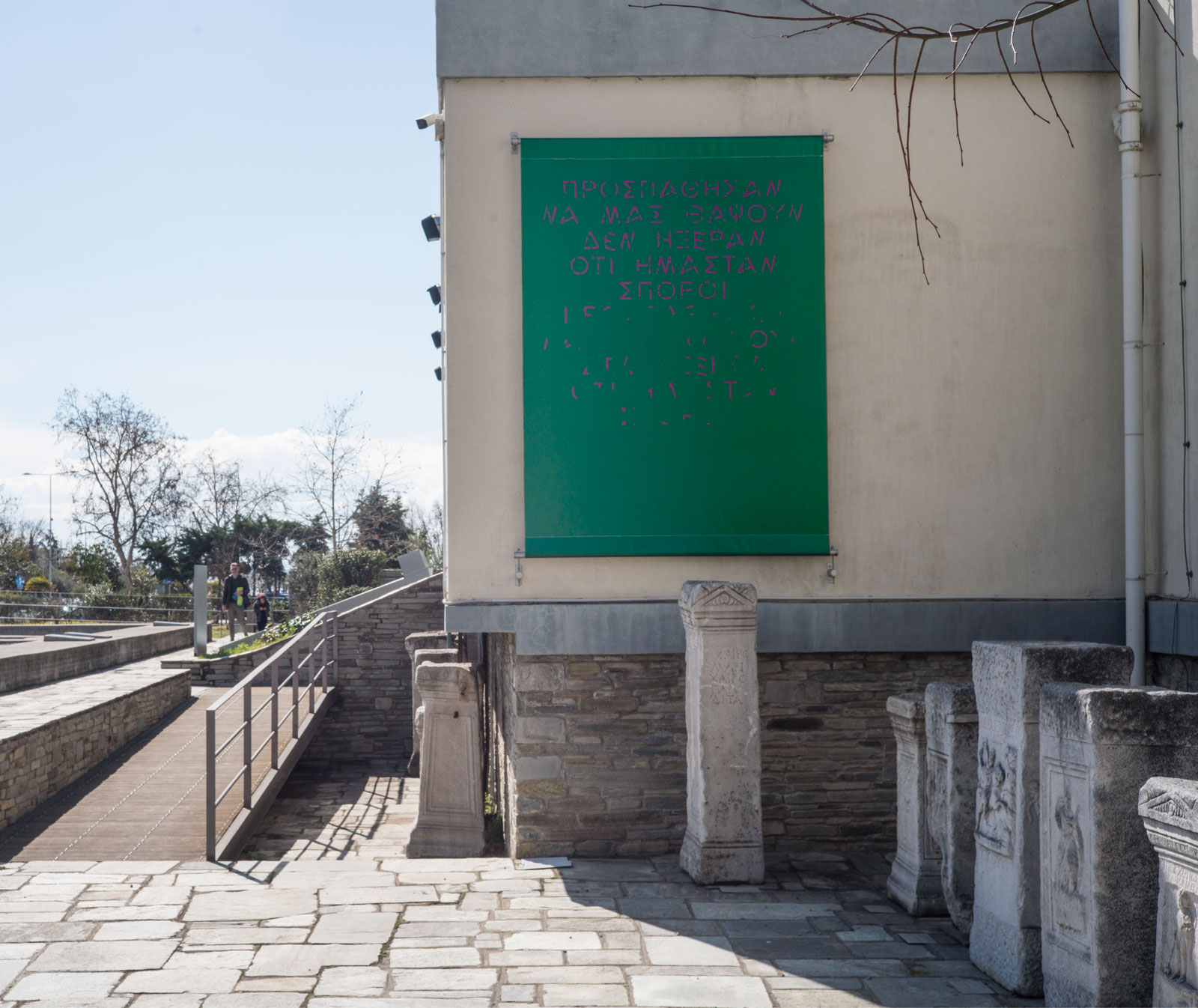
Archeological Museum of Thessaloniki. Credit : Joshua Olsthoorn.

"The sultan was asleep in his palace one night when God came to him in a dream and gave him a beautiful sweet-smelling rose to sniff. When Murad asked if he could keep it, God told him that the rose was Salonica and that he had decreed it should be his.", Ottoman legend (in Ottoman Turkish).
Islahane. Credit : Joshua Olsthoorn.
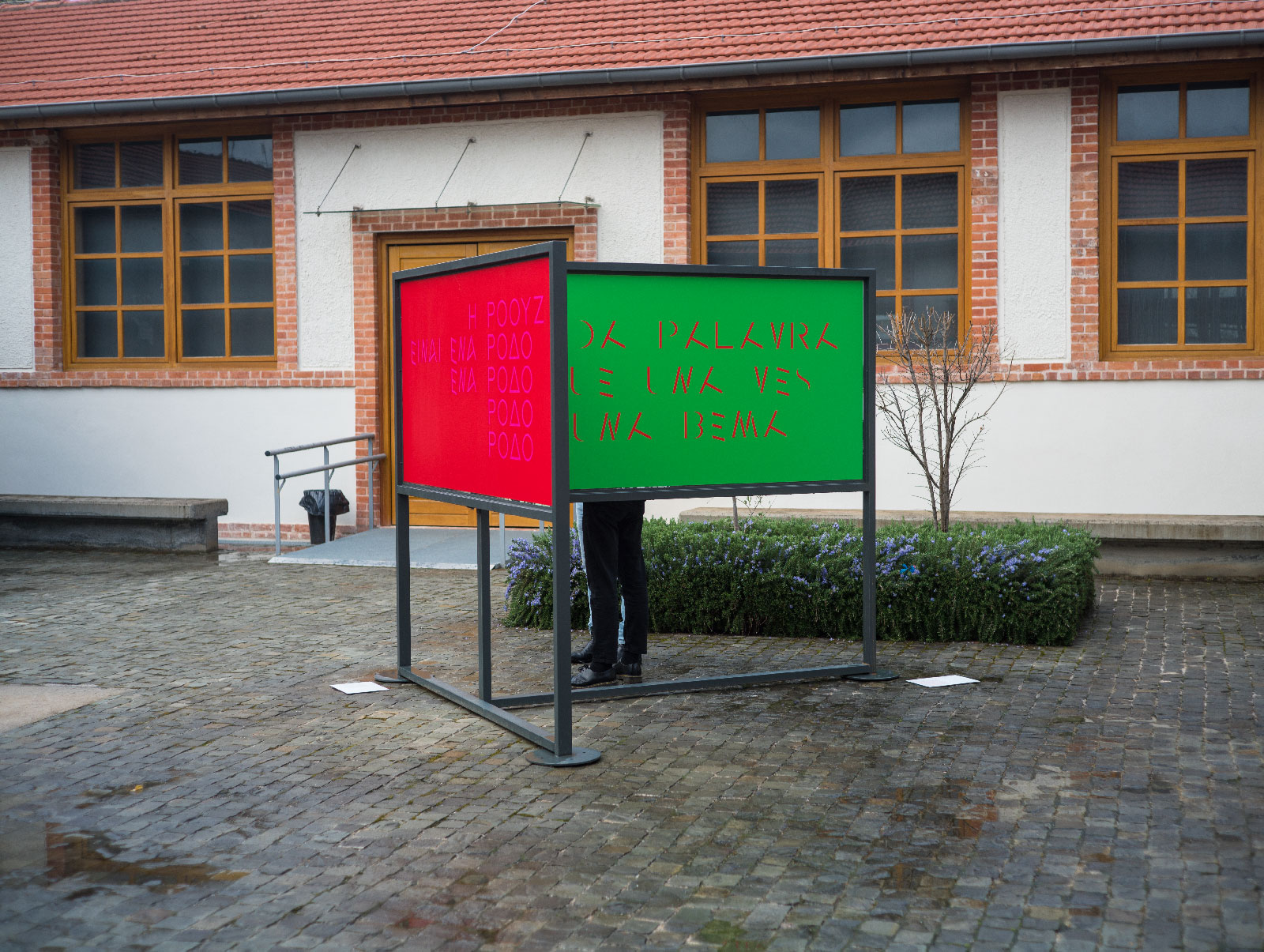
"Every word was once an animal", Ben Marcus (in Ladino).
Islahane. Credit : Joshua Olsthoorn.

MOMus museum. Credit: Joshua Olsthoorn.
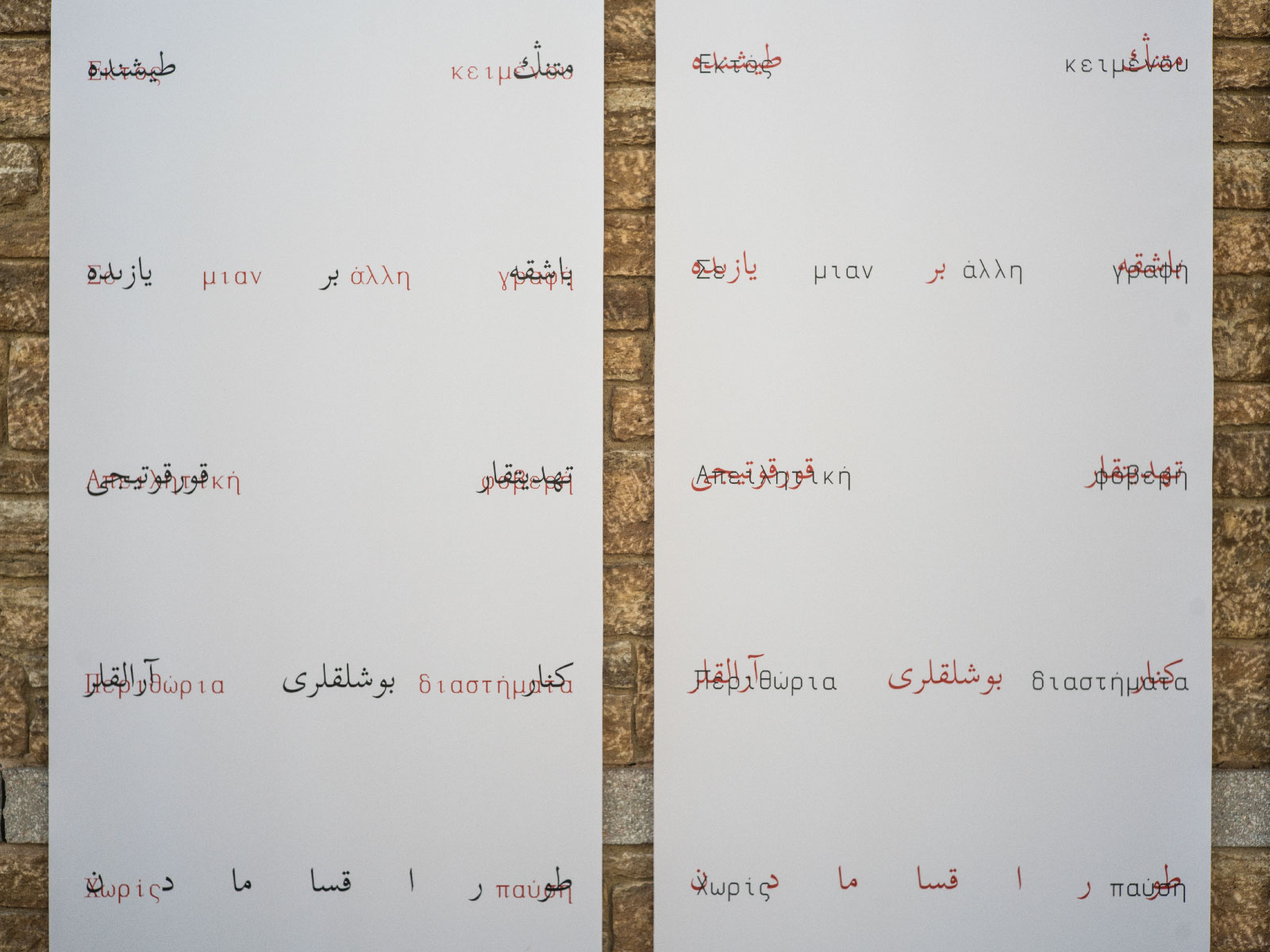
Byzantine Museum. Credit : Joshua Olsthoorn.
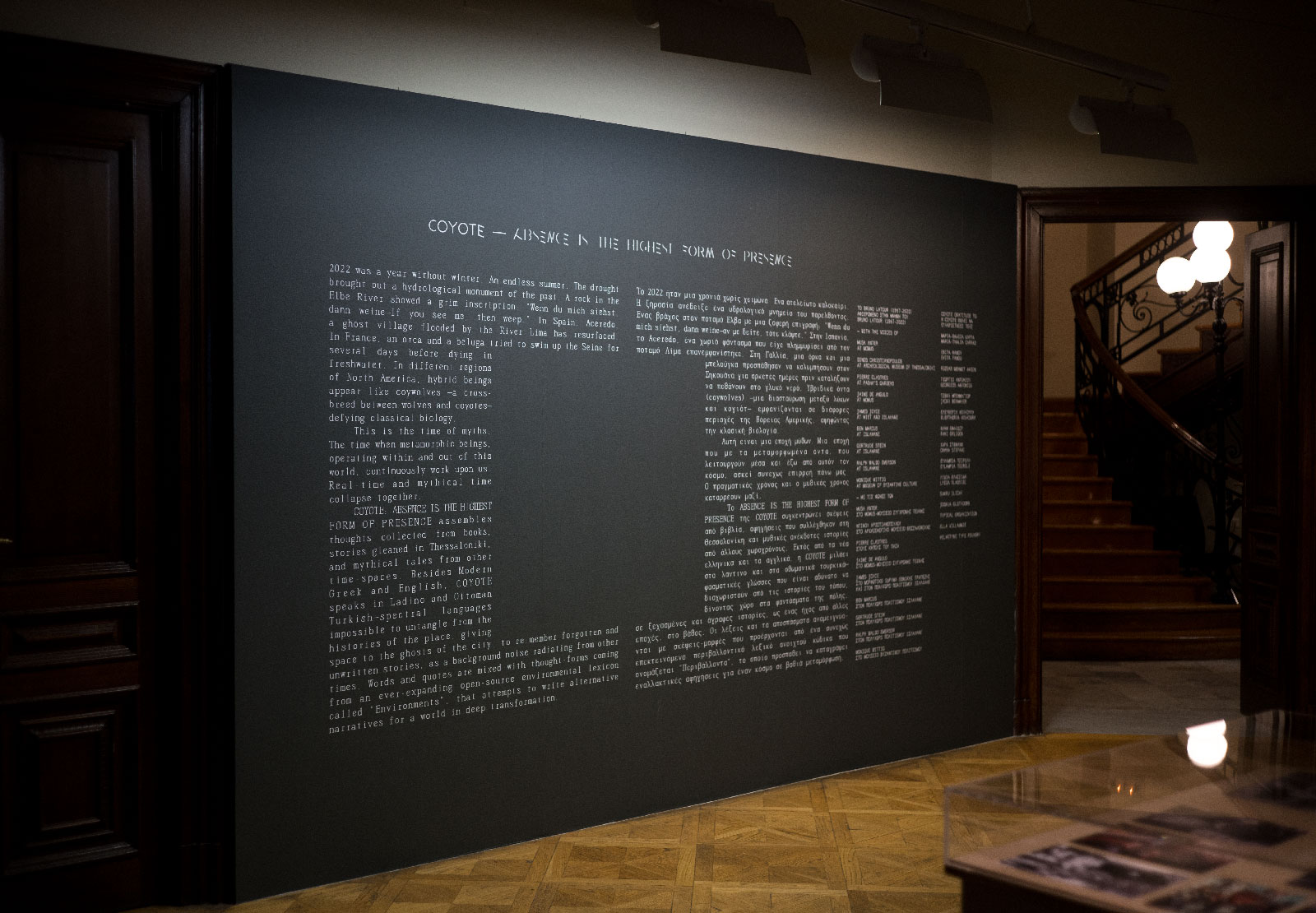
Statement by COYOTE (in English and modern Greek).
Cultural Foundation of the National Bank.

MOMus museum. Credit: Wiley.
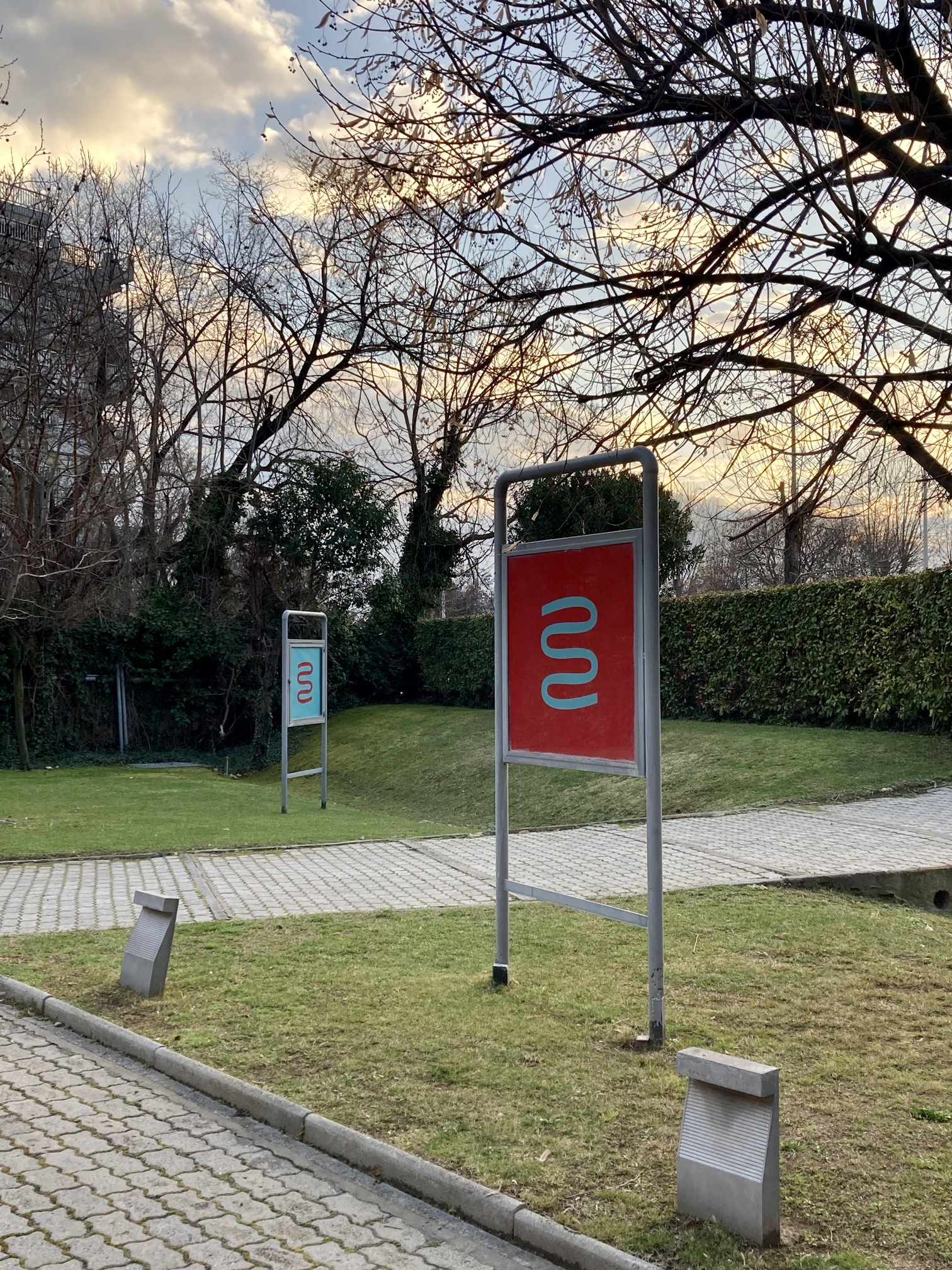
Cultural Foundation of the National Bank. Credit : Wiley.